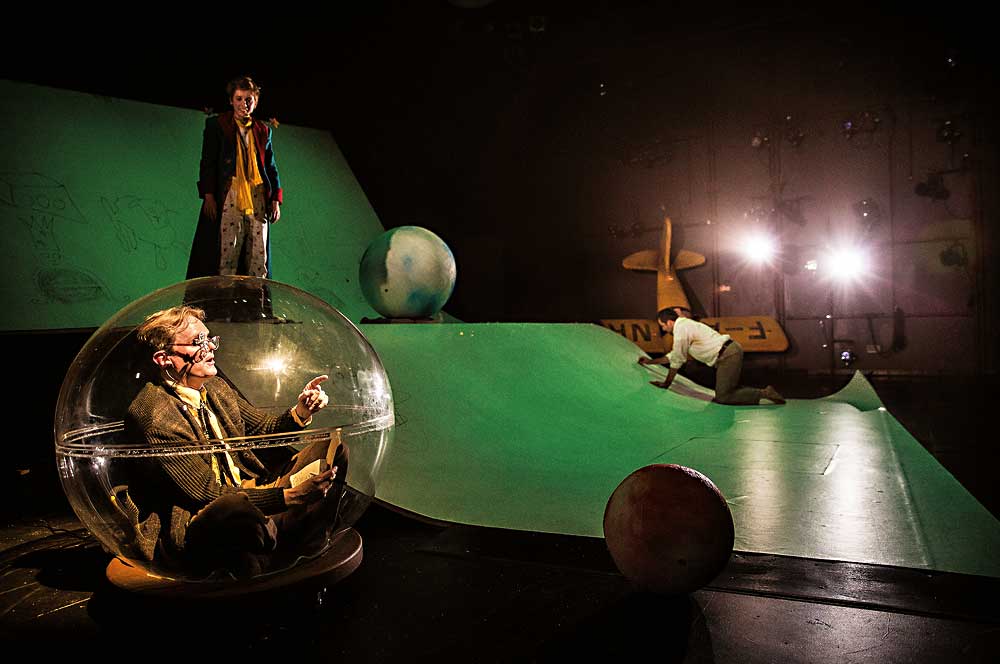In December, I had the honor of visiting Chicago to spend time with the Lookingglass Theatre Company as the ensemble convened to plan its next season. Among other things, the visit inspired me to reflect on the evolution of the American theatre field and the place of ensembles in it. Thanks to the existence of the Network of Ensemble Theaters, we have a way to track trends and characteristics specific to these theatres. I also learned quite a bit from sitting among these founders and veterans of the second largest (budget-wise) ensemble in the U.S.
Ensembles around the nation differ in how they are organized: Some are consensus-driven and others not. Some have full-time companies of artists, while others are collections of individuals who divide their time among many pursuits, while regularly participating in projects and programming decisions. Some have their own spaces and others don’t.
Some ensembles are primarily interested in leveraging their artistic work in service of specific social justice issues, while others are firmly focused on the art as an end in itself. Some work through a collective-creation process of devising work, and others only produce existing plays or commissioned scripts.
One thing is for sure: In any true ensemble, there is a sense of continuity among the artists—a continuity that is crucial to maintaining a strong artistic culture and a sense of values, as well as firm control of organizational issues. In an ensemble setting, you are likely to find a group of artists participating in crucial decisions affecting their own organization—while also exploring together the larger systemic issues facing our theatre field.
From that conversation in Chicago and others since, I found some relevant intersection points with recent findings in our “Taking Your Fiscal Pulse Survey” for the fiscal year that ended in 2014. The survey has ramifications for all of us in 2015 and beyond. It has also amplified questions that are on my mind every day: What is the ultimate purpose of theatre in the 21st century? Are we moving ever more rapidly into an age where producing art for its intrinsic beauty is not sustainable?
TCG’s own vision statement is “a better world for theatre, a better world because of theatre.” That vision assumes the value and necessity of all kinds of theatre, whether it’s community-based work that helps bring about discourse and action on local issues or classic and new plays that pry open an awareness of the foibles and triumphs of being human…and/or that may simply make us laugh. However, is theatre really supported—by audiences or by funders—in doing both?
In choosing what work to produce, artistic decisionmakers often find themselves in the delicate position of perfectly calibrating at least three notes: 1) Which work will be rewarding for the artists involved? 2) Will it be resonant for an audience and a community? And, of course, 3) Is it affordable or fundable?
It has long been observed that arts funders (with a few notable exceptions) gravitate toward project-specific support or promoting measurable social change through art, rather than offering up unrestricted gifts to nourish the pure vision of an artist, a theatre or an ensemble. At the same time, institutional funding is not the growth business that individual giving seems to be. And while some individuals are interested in putting their philanthropic dollars to work on very specific projects and goals, the majority are willing to invest unrestricted dollars in the organizations they care about. Needless to say, on a list of issues that theatre leaders ranked in terms of importance, fundraising from individuals stands at the top. It is followed closely by audience development, board development, strategic planning and restoring compensation lost during economic hard times.
So how do we continue to grow the art itself, amid fiscal challenges and wide-ranging opinions about the very role and purpose of art in today’s society?
In the 1960s and ’70s, when our movement was gaining momentum, most theatre leaders founded organizations that would ultimately become institutionalized, with buildings, boards and budgets. Sometime in the 1970s and ’80s, fiscal crises—combined with what was designated “the artistic deficit”—prompted funders such as the Ford Foundation and the Andrew W. Mellon Foundation to create a National Arts Stabilization Fund to help infuse cash into the struggling field and pave the way for a next phase of artistic and audience development. A 21st century version of that initiative does not seem close at hand.
And while the answer for many organizations certainly lies in more cash, innovative partnerships and strategies are also being tapped in order to support the next stages of field-wide development. Ensemble-based companies are increasingly partnering with universities and resident theatre companies. Resident theatres are honing their audience-engagement and community-development skills, often uniting them with non-arts-sector partners. Theatre leaders are finding ways, in the absence of financial support for core artistic process, to create smaller residencies and training opportunities that will help incrementally build their artistic muscle.
And, at the end of the day, regardless of business strategies (and efforts to simply stay in business), what matters most to the well-being of the field is the quiet yet powerful interaction that can evolve between audience and artist—in theatres, church basements, storefronts, forests and fields—all across the U.S.


